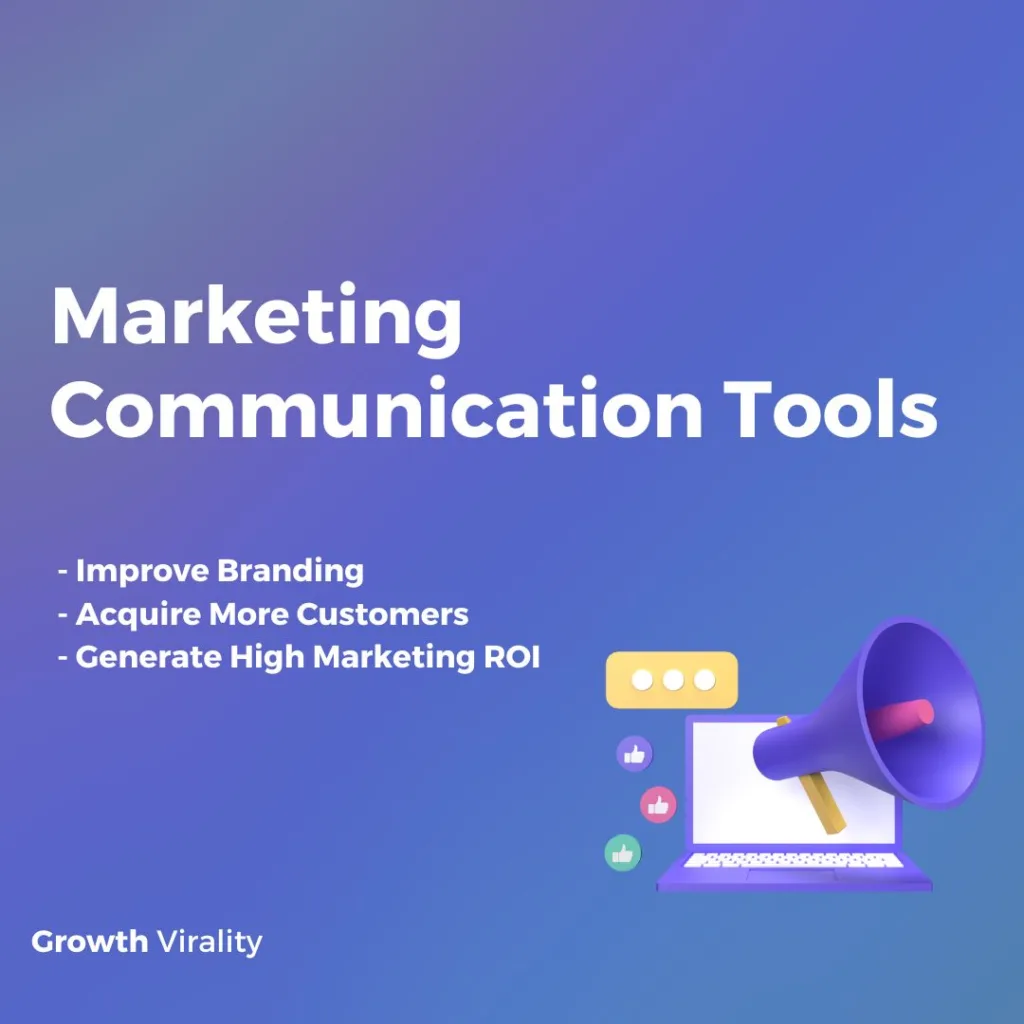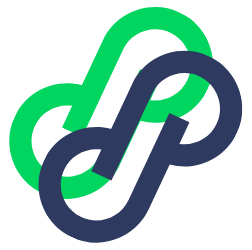Marketing communication tools are a powerful force to help your business get the desired revenue from marketing campaigns.
The right marcom tools attract the attention of your target buyers by offering a smooth communication experience that educates, nurtures, and converts.
What is Marketing Communication?
Marketing communication includes the methods and techniques companies use to communicate messages about their products, services, or products to target audiences.
It includes a variety of marcom channels, such as:
- Advertising
- Public Relations
- Sales Promotions
- Direct Marketing
- Social Media
- Brand Marketing and others
Marketing communication aims to inform, persuade, and influence buyers to take action, such as purchasing a product, downloading an ebook to a service, or engaging with a brand.
Why Integrated Marketing Communication (IMC)?
- Ensures a uniform message across all channels, avoiding confusion.
- Channels working together create a more potent overall impact.
- Considers all aspects of communication for a unified strategy.
- Focuses on providing a seamless, customer-centered experience.
- Streamlined processes make campaigns more efficient and cost-effective.
- Reinforces key messages, contributing to a strong and recognizable brand.
- Leverages channel strengths for more effective communication.
- Allows the adaptation of messages to diverse audience preferences.
- Involves data collection for valuable, insights-driven decisions.
- Presents a unified front, gaining a competitive edge.
- Reaches a broader audience, enhancing visibility.
- Builds enduring relationships and a strong brand presence.
- Efficient use of resources for improved ROI.
- Ensures that all messages align with the brand’s narrative.
- Aligns marketing efforts with overall business goals for optimal impact.
Also See: Best Collection of Marketing Tools For Ambitious Brands
How Important is Marketing Communications?
- Effective communication strengthens customer bonds.
- Communication empowers informed choices and brand understanding.
- Positive media relations shape favorable public perceptions.
- Communication is key to agile solutions in marketing challenges.
- Transparency builds trust, forming the foundation of brand relationships.
- Strategic communication provides a competitive edge in the market.
- Targeted messages maximize relevance and impact for conversion.
- Clear messaging and precise targeting contribute to higher ROI.
- Cohesion between content and channels enhances overall effectiveness.
- Tailored communication for online platforms boosts visibility and engagement.
Features of the Marcom Mix
- Advertising: Paid messages across various media channels.
- Public Relations (PR): Building positive relationships with the public and media.
- Sales Promotion: Short-term incentives to stimulate sales and interest.
- Personal Selling: Direct communication with potential customers by sales reps.
- Direct Marketing: Targeted communication directly to consumers through channels.
- Digital Marketing: Online strategies, including social media and SEO.
- Social Media Marketing: Using platforms for brand promotion and engagement.
- Content Marketing: Creating and distributing high-quality and buyer-intent-specific content for audience attraction.
- Event Marketing: Brand promotion through organized events or sponsorships.
- Sponsorships: Associating a brand with specific events, causes, or entities.
- Influencer Marketing: Leveraging influencers for product or service promotion.
- Point-of-Sale Displays: Visual merchandising to attract customers at purchase points.
- Packaging Design: Strategic design of product packaging for brand appeal.
- Word of Mouth (WOM): Leveraging positive customer experiences for recommendations.
- Branding: Creating a distinct brand identity through logos and visual elements.
The Best Marketing Communication Tools
1- Traditional Advertising
Traditional advertising is a push form of marketing, where commercial messages are distributed to a broad audience, regardless of whether they are interested in buying them.
Examples:
- Business Cards
- Cold Calling
- Trade Show Displays
- TV and Radio Ads
- Newspaper Ads
- Magazine Ads
- Posters and Flyers
- Billboards
- Direct Mail Advertising
- Outdoor Signage
- Yellow Pages Listings
Also See: The Ultimate List of Marketing Software For SMBs
2- Digital Marketing
Digital marketing utilizes online strategies to promote businesses, leveraging diverse digital channels like search engines and social media for advertising products, services, or brands.
One key difference between traditional and online advertising is that ROI from traditional marketing is hard to measure. At the same time, you can track your marketing measurement using digital advertising.
Examples:
- Search Engine Optimization (SEO)
- Content Marketing
- Social Media Marketing
- Email Marketing
- Pay-Per-Click (PPC) Advertising
3- Direct Marketing
Direct marketing allows companies to talk directly with capable clients, bypassing intermediaries, outlets, or distributors. Direct advertising through focused messaging aims to promote products or services, generate income or leads, and build long-term client relationships.
Examples:
- Direct Mail
- Email Marketing
- Telemarketing
- SMS Marketing
- Direct Response Advertising
- Personal Selling
Also See: Most Popular Content Marketing Software
4- Content Marketing
Content promotion is a digital marketing strategy to create and publish content that attracts and engages a target market.
Examples:
- Blog Posts
- Video Tutorials
- Social Media Campaigns
- Ebooks and Whitepapers
- Infographics
5- Email Marketing
Email advertising and marketing is a digital advertising and marketing method that involves the distribution of centered promotional messages or newsletters through electronic mail to a collection of subscribers or leads.
Examples:
- Audience Reach
- Engagement and Interaction
- Brand Building
- Targeted Marketing
- Measurable Results
- Cost-Effectiveness
- Adaptability and Innovation
Also See: List of the Most Powerful Growth Hacking Platforms
6- Social Media Marketing
Social media advertising promotes merchandise, services, and brands through social media sites like Facebook, Pinterest, Instagram, Twitter, LinkedIn, and TikTok.
Examples:
- Social Media Content Creation
- Profile Management
- Hashtag Campaigns
- Influencer Collaborations
- Paid Advertising
- Contests and Giveaways
- Live Video Streaming
- Community Building
- Social Listening
- Cross-Promotion
- Storytelling
7- Influencer Marketing
Influencer marketing is promoting services or products by partnering with individuals who have a committed and engaged following on social media.
Examples:
- Product Reviews
- Social Media Takeovers
- Affiliate Marketing
- Event Collaboration
- Giveaways and Contests
- Podcast Collaborations
- Co-Created Content
- Webinars or Live Sessions
- Educational Collaborations
Also See: AI-Content Marketing Software List: 2024 Rankings
8- Sponsorships
Sponsorships contain partnerships between an enterprise entity, wherein the sponsor offers monetary or other guidance in trade for promotional opportunities and logo publicity.
Sponsorship agreements can take many forms, including sponsoring sports activities, teams, athletes, concert events, gala’s, events, charities, or online platforms in exchange for sponsorship with the sponsor’s featured brand or conceived in partnership with the sponsoring corporation.
Examples:
- Cash Sponsorship
- In-Kind Sponsorship
- Product Placement
- Exclusive Sponsorship
- Title Sponsorship
- Endorsement Sponsorship
- Social Media Sponsorship
- Event Sponsorship
9- SMS Marketing
SMS or text message advertising is sent to clients via textual content message. This type of advertising lets companies reach their clients immediately.
Examples:
- Retail Promotions
- Appointment Reminders
- Event Invitations
- Order Updates
- Customer Surveys
- Mobile Coupons
- Appointment Reminders
10- Blogging
Blogging is a form of content promotion where you create and publish blog posts on a particular niche, topic, or subject matter.
It serves various purposes, including sharing information, building communities, and as a tool for content marketing.
Examples:
- Business Blogging
- Niche Blogging
- Guest Blogging
- Affiliate Marketing Blogging
- Educational Blogging
Also See: Best Marketing Analytics Tools & Platforms
11- Native Advertising
Native commercials are paid marketing that blends in well with their surroundings and suits the style, fashion, and tone of the platform it is seen on.
Unlike traditional intuitive show ads, native advertisements appear and feel like organic content material and are less disruptive to audiences.
Examples:
- Sponsored Articles
- Promoted Social Media Posts
- Recommended Content Widgets
- Branded Videos
- Influencer Collaborations
12- Webinars
Webinars are online presentations, workshops, or lectures held in real time over the Internet.
They are used for training, education, product demonstrations, and advertising.
Examples:
- Educational Webinars
- Training Webinars
- Marketing Webinars
- Product Demos
- Thought Leadership Webinars
- Professional Development Webinars
- Sales and Marketing Training
13- Public Relations (PR)
Public Relations involves employing strategies to promote and uphold a positive public image for brands, focusing on enhancing brand reputation.
It involves managing the flow of information between the entity and the public to establish goodwill, trust, and credibility.
PR professionals use various communication channels and tools to shape public perceptions, influence opinions, and maintain a favorable reputation.
Examples:
- Press Releases
- Media Relations
- Social Media Engagement
- Event Management
- Crisis Communication
- Corporate Social Responsibility (CSR) Initiatives
Also See: Top-Rated Digital PR Platforms Reviewed and Ranked
14- Chatbots and Live Chats
Chatbots and live chat are conversational interfaces used in customer support and online communication.
Chatbots are AI-driven computer programs that engage with users through human-like conversations, utilizing text or voice interactions.
Live chats allow customers to start conversations with agents at once through a live interface, where they can ask questions and get help in real time.
Examples:
- Customer Support Bot
- Booking Assistant
- Sales Assistance
- Technical Support
- Product Recommendations
- Order Assistance
- Billing and Payments Live Chat
- User Onboarding Bot
Factors to Consider While Selecting Marketing Communication Tools
- Align the Marcom mix with the preferences and behaviors of the intended audience.
- Ensure the Marcom tools align with specific communication goals and objectives.
- Consider financial resources available for implementing and maintaining the marketing communication mix.
- Choose channels that complement the content and tone of the communication message.
- Identify the media channels where the target audience is most active and responsive.
- Analyze competitors’ Marcom tools strategies and select a mix for a competitive edge.
- Ensure the selected channel mix enhances and aligns with the overall brand image.
- Choose a mix that can seamlessly integrate for a cohesive communication approach.
- Select channels that allow for the effective measurement of communication effectiveness.
- Consider the optimal timing and frequency of communication for each channel in the mix.
- Choose a Marcom mix that can adapt to changing needs and scale with business growth.
- Evaluate the historical performance of each Marcom channel in reaching and engaging the audience.
Conclusion
Marketing communication success depends on how well you know your target buyers.
Hence, it is crucial to determine the total addressable market (TAM), which will help you identify the most and the least valuable customer segments.
After all, growing a brand depends on the ability of the business to acquire more customers. Your target consumers should choose your products over your competitors.
A comprehensive and data-driven marketing communication strategy maximizes your sales success and improves your bottom line.

